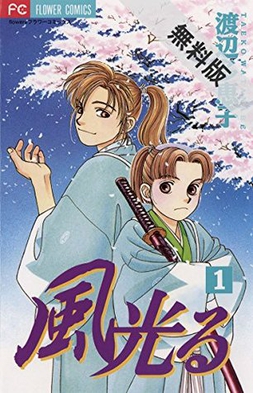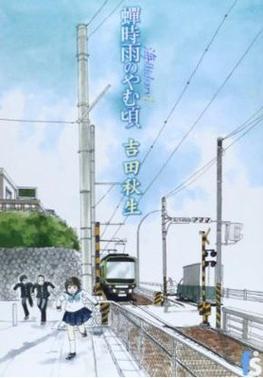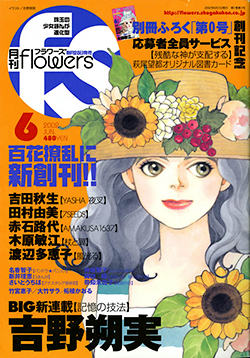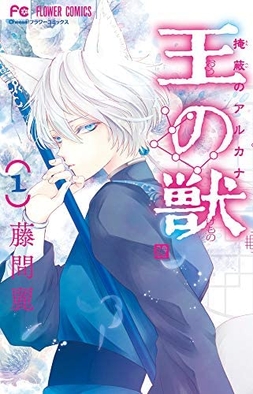| Banana Fish | |
 First tankōbon volume cover, featuring Ash Lynx | |
| Genre | Drama, thriller [1] |
|---|---|
| Created by | Akimi Yoshida |
| Manga | |
| Written by | Akimi Yoshida |
| Published by | Shogakukan |
| English publisher | |
| Imprint | Flower Comics |
| Magazine | Bessatsu Shōjo Comic |
| English magazine | |
| Demographic | Shōjo |
| Original run | May 1985 – April 1994 |
| Volumes | 19 |
| Prequels &related works | |
| |
| Anime television series | |
| Directed by | Hiroko Utsumi |
| Produced by |
|
| Written by | Hiroshi Seko |
| Music by | Shinichi Osawa |
| Studio | MAPPA |
| Licensed by | Amazon Prime Video |
| Original network | Fuji TV (Noitamina) |
| Original run | July 5, 2018 – December 20, 2018 |
| Episodes | 24 |
Banana Fish (stylized in all caps) is a Japanese manga series written and illustrated by Akimi Yoshida. It was originally serialized from May 1985 to April 1994 in Bessatsu Shōjo Comic ,a manga magazine publishing shōjo manga (girls' manga). Set primarily in New York City in the 1980s,the series follows street gang leader Ash Lynx as he uncovers a criminal conspiracy involving "banana fish",a mysterious drug that brainwashes its users. In the course of his investigation he encounters Eiji Okumura,a Japanese photographer's assistant with whom he forms a close bond.
Contents
- Plot
- Production
- Context
- Development
- Release
- Related media
- Side stories
- Anime
- Other adaptations &tie-ins
- Themes and analysis
- Homosexuality
- Gender
- Occidentalism
- Violence
- Reception and legacy
- Notes
- References
- Bibliography
- Further reading
- External links
The visual and narrative style of Banana Fish,characterized by realist artwork and action-oriented storytelling,represented a significant break from then-established shōjo manga conventions of highly stylized illustration and romantic fantasy-focused stories. While the series was aimed at the shōjo audience of adolescent girls and young adult women,its mature themes and subject material attracted a substantial crossover audience of men and adult women. Its depictions of homoeroticism in this mature,action-oriented context were particularly influential on the boys' love (male-male romance) genre of manga. Banana Fish was acclaimed by critics,who offered praise for the series' plot,dialogue,and action scenes. It is Yoshida's most commercially successful work,with over 12 million copies of collected volumes of the series in circulation as of 2018.
An English-language translation of the series was published by Viz Media,which also serialized Banana Fish in its manga magazines Pulp and Animerica Extra beginning in 1997,making Banana Fish one of the earliest manga series to reach a wide audience in the United States. The series has been adapted several times,notably in 2018 as a 24-episode anime television series directed by Hiroko Utsumi and produced by MAPPA. The anime adaptation aired on Fuji TV's Noitamina programming block and is syndicated globally on Amazon Prime Video,which simulcast the series during its original broadcast run.















